No wonder the Land of Easter Island (in time-space) would be
very hard to relocate once their cosmographic map had been lost:
... When Ira's canoe reached the islets (off
the southwestern coast), Makoi (who was staying behind) shouted
[he rangi] the following (after him):
'Eight lands (are there), one has been found
(or, an eighth land has been found for the first time, evaru
[ēvaru] kainga katahi i ravaa), that is, Te Pito O
Te Kainga. During the fast journey, one cannot find the seven
lands [ehitu kainga] in the midst of dim twilight. Once
(Easter Island) has been lost [ka ngaro ro ēra], not even
eight groups of people (i.e., countless boat crews) can find
(it) again ... [E:86]
Therefore they decided to write Manuscript E as a guide before
it all had become completely forgotten.
We have to take seriously every little detail.
... The signs written are extremely exact and every detail
carries meaning according to a simple and natural system of
logic. Normally a glyph carries many such signs and it is
therefore difficult to find two glyphs with exactly the same
design and meaning. However, there is no need for nor indication
of the glyphs carrying sound values. Sounds are generated by the
inspired reader ...
And therefore we have to repeat, time and again. Right ascension
day *78 was at heliacal Rigel = *16 days after the Egg (Beid).
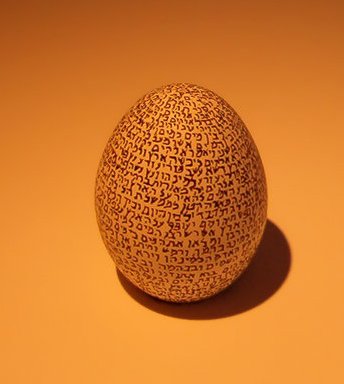
|
Variants of taro brought by Oti from
the plantation of Teke: |
|
1 |
*69 |
ngeti uri. |
a Teke. a Oti. |
|
2 |
*70 |
ngeti tea. |
|
3 |
*71 |
he ngaatu. |
|
4 |
*72 |
he tuitui koviro. |
|
5 |
*73 |
he ketu anga mea. |
|
6 |
*74 |
he ketu takarua. |
|
7 |
HAEDUS II |
he teatea. |
|
8 |
*76 |
he ngu haha tea. |
|
9 |
*77 = *66 + *11 |
he mango. |
|
10 |
RiGEL (*78) |
he hahara rapanui |
|
1 |
*79 |
he ti. |
|
1 |
*80 |
he kape. |
He hahara rapanui ought to indicate how on
Easter Island (Rapa Nui) they had another point of
reference from where to begin
counting (instead of the Pleiades).
... In view of the almost universal
prevalence of the Pleiades year throughout the Polynesian area
it is surprising to find that in the South Island and certain
parts of the North Island of New Zealand and in the neighboring
Chatham Islands, the year began with the new Moon after the
yearly morning rising, not of the Pleiades, but of the star
Rigel in Orion ...
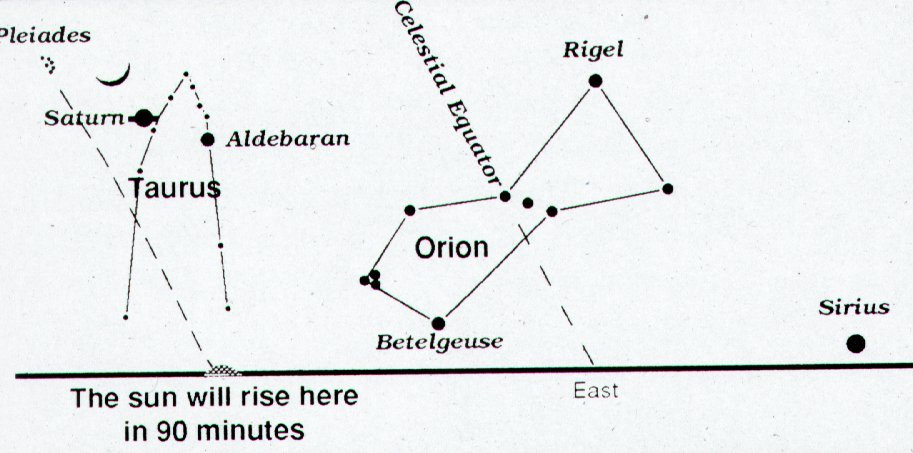
|
7 he teatea. |
8 he ngu haha tea. |
9 he mango. |
10 he hahara rapanui
|
1 he ti. |
|
... When this
tremendous task had been accomplished Atea
took a third husband, Fa'a-hotu, Make
Fruitful. Then occurred a curious event. Whether
Atea had wearied of bringing forth offspring we
are not told, but certain it is that Atea and
her husband Fa'a-hotu exchanged sexes. Then
the eyes of Atea glanced down at those of his
wife Hotu and they begat Ru. It was
this Ru who explored the whole earth and
divided it into north, south, east, and west
...
Haha. 1. Mouth (oral cavity,
as opposed to gutu, lips). 2. To carry
piggy-back. He haha te poki i toona matu'a,
the child took his father on his back. Ka haha
mai, get onto my back (so I may carry you).
Vanaga. 1. To grope, to feel one's way; po haha,
darkness, obscure. 2. Mouth, chops, door, entrance,
window; haha pipi, small mouth; haha
pipiro, foul breath; ohio haha, bit of
bridle; tiaki haha, porter, doorkeeper.
Churchill. Hahaga. Ridge, summit, wall plate.
Maroa hahaga, to measure lands, to walk at a
great pace. Churchill.
Hara. Harahara 1. Misaligned
(of roofing, basketware, etc.); e harahara nó te
kete, the basket is misaligned (its strips are
not parallel. 2. A sort of taro. 3. Latrine,
defecating ground. Vanaga. 1. Pandanus. P Mgv.:
ara, puhara, pandanus (tree); hara,
a bunch of pandanus fruit, old pandanus. Mq.: faá
haá, pandanus. Ta.: fara, id. 2. Error,
mistake, oversight, wrong; to err, to confound, to
mistake; manau hara, illusion; toua hara,
discussion without knowing the object. P Mgv.:
ara, arara, defective, abortive, to miss,
to fail, a fault, a quarrel; hara, a fault, a
mistake, an error, a dispute, a quarrel,
undisciplined. Mq.: hara, a rake, libertine.
Ta.: hara, sin, fault, crime. Churchill. |
|
APRIL 1 (59 + 32) |
2 |
3 (*13) |
4 |
5 (95) |
 |
 |
 |
 |
 |
|
Ga1-11 |
Ga1-12 |
Ga1-13 |
Ga1-14 |
Ga1-15 |
|
HAEDUS II
= η Aurigae
(75.9) |
5h (76.1)
ε
Leporis (76.0),
CURSA
(Footstool)
=
β
Eridani
(76.4),
λ
Eridani (76.7)
*35.0 = *76.4 - *41.4 |
μ
Aurigae, μ Leporis (77.6) |
ĸ Leporis (78.0),
RIGEL
(Foot)
=
β
Orionis
(78.1),
Flaming Star = IC405
(78.2),
CAPELLA
=
α
Aurigae
(78.4),
ο
Columbae,
τ
Orionis (78.8)
*37.0
= *78.4 - *41.4
THUBAN (α
Draconis)
|
λ Aurigae (79.0), λ Leporis (79.6), ρ Aurigae (79.7)
ARCTURUS (α
Bootis) |

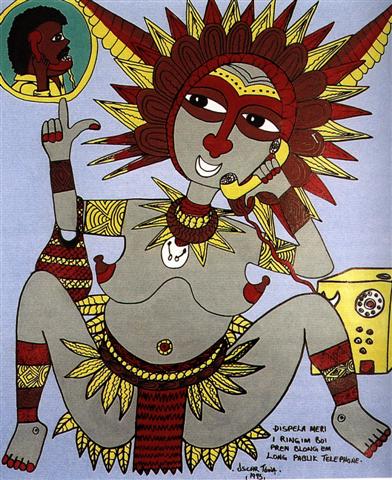
|
 |
 |
|
hanau |
RIGEL & CAPELLA
|
Hanau. 1. Race, ethnic group.
Hanau eepe, the thick-set race; hanau
momoko, the slender race (these terms were
mistranslated as 'long-ears' and 'short-ears'). 2.
To be born. Hanau tama, pregnant woman;
vî'e hanau poki, midwive (also: vî'e hakaa'u).
Vanaga. To be born; vie hanau, midwife. P
Pau.: fanauga, child, descendant, progeny.
Mgv.: hanau, to be born, to be brought into
the world. Mq.: fanau, hanau, to be
born, to lie in, to bring into the world. Ta.:
fanau, to be born, to lie in. Churchill. |
|
June 4 |
5 |
6 (157 = 314 / 2) |
7 (94 + 64) |
8 (*444) |
|
°May 31 (151) |
°June 1 |
2 (*73) |
3 (94
+ 60) |
4 (*440) |
|
'May 8 (128) |
9 |
10 (*50) |
11
(94 + 37) |
12 (*52) |
|
"April 24 (114) |
Vaitu Nui 25 (*35) |
26 (4 * 29) |
27 (94 + 23) |
28 (118 = 4 * 29) |
|
... The Explorers had left their
old homeland in "April 25 (115) - implying the
synodic cycle of Mercury - and they
had returned half a year later,
in "October 25 (298 = 115 + 183), which was 10 days
after the arrival of the Royal Double Canoe ...
... Ganz
ähnlich is der Name 'Gott von Duazag' des
Gottes Nabū ... zu erklären.
Er bezeichnet ihn als den Gott
des Wachtstums, welches als aus dem Osten stammend
betrachtet wird, weil die Sonne, die das Wachstum
bringt, im Osten aufgeht. Dass aber Nabū
als Ost-Gott aufgefasst wurde, hängt damit zusammen,
dass sein Stern, der Mercur, nur im Osten oder
Westen sichtbar ist ...

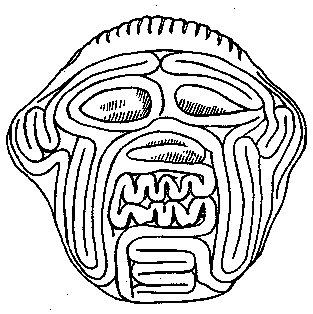 
 |
|
CLOSE TO THE FULL
MOON: |
|
OCT 1
(91 + 183) |
2
(275) |
3 |
4 |
5 |
|
17h
(258.7)
ARRAKIS = μ Draconis
(258.7) |
Mula-19 (The Root)
SABIK (The Preceding One)
=
η
Ophiuchi
(259.7),
η
Scorpii (259.9) |
NODUS I =
ζ
Draconis
(260.0),
π
Herculis (260.7),
RAS ALGETHI (Head of the Giant)
=
α
Herculis
(260.8) |
SARIN =
δ
Herculis
(261.0),
ο
Ophiuchi (261.4)
*220.0 = *261.4 - *41.4
ALRISHA (α
Piscium) |
ξ Ophiuchi (262.2), θ Ophiuchi, ν Serpentis, ζ, ι
Apodis (262.4), ι Arae (262.8), ρ Herculis (262.9)
*221.0 = *262.4 - *41.4 |
|
Dec 4 |
5 |
6 (*260) |
7 |
8 (342) |
|
°Nov
30 |
°Dec 1
(335) |
*(8 *
32) |
3 |
4
|
|
'Nov 7 |
8
(*232) |
9 |
10
(314) |
11 |
|
"Oct
24 |
Tangaroa Uri 25 |
26 |
27
(300) |
28 |
|
...
Page E:86 tells about Makoi being left behind
on Easter Island when the remaining 5 Explorers
sailed home to Hiva. From there (Tangaroa
Uri 25) to the day when Hotu became
worried about where Oto Uta was, i.e. in
Tangaroa Uri 30, there were 5 days:
|
April 25 (115) |
5 + 56 |
June 25 (176) |
5 + 116 |
Oct 25 (298) |
5 + 56 |
Dec 25 (359) |
5 + 116 |
|
61 |
2 * 61 |
61 |
2 * 61 |
|
183 |
183 |
|
366 = 2 * 183 = 6 * 61 |
And
from the autumn equinox (265) at Antares to the
Sting of the Scorpion (υ
Scorpii) there were 15 days
...

... the tubers [of kape]
had to be kept in the earth-oven for 15 (sic)
days in order to eliminate some of the poisonous
components ... 2 *
175 (Day of St John) = 350 = 365 - 15.
... Thus the regular
old Roman year ended with Februarius 23 and it was
350 nights long, 25 fortnights ... |
The Root (Mula) should be at the Full Moon in "April 25 (115) when the Sun
rose at Cursa. But with heliacal Rigel at the beginning pf the
year there
was a kind of misalignment (hahara) - as if inherited from
the pair Aldebaran and Antares:
|
he maika. a Teke. a
Oti. [E:67] |
he taro.
a Teke. a Oti. [E:68] |
|
no glyph |
3 |
 |
9 |
 |
2 |
|
HYADUM II
(*64) |
ALDEBARAN (*68) |
RIGEL (*78) |
|
Heart-5 (Fox)
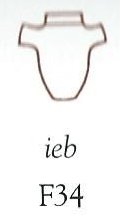 |
"April 17 (107) |
"April 27 (117) |
|
1 |
ANTARES (*249) |
SABIK (*259) |
|
 |
 |

This hahara rapanui was presumably 'underlined' by
redundantly repeating the pair of pages numbered 68 and 69, with the first pair
of taro variants ngeti uri and ngeti tea located together with the bananas on page 67.
|
5 he nahoo. |
1
ngeti uri. |
2
ngeti tea. |
|
JULIAN EQUINOX (84) |
MARCH 26 |
27 (*6) |
 |
 |
 |
|
 |
 |
 |
 |
|
mauga |
kai |
May 30
(150) |
ragi |
|
|
Ga1-4 |
Ga1-5 |
Ga1-6 |
|
Rohini-4 (The Red One) /
Pidnu-sha-Shame-4 (Furrow of Heaven)
/
ANA-MURI-2 (Rear pillar - at the foot of which was
the place for tattooing)
ALDEBARAN
= α Tauri
(68.2),
THEEMIN = υ² Eridani
(68.5) |
no star listed (69) |
no star listed (70)
(3112 BC + AD 1842) *
365.25 / 26000 = 70 |
|
May 28 (148) |
29 (88 + 61) |
30 (*70) |
|
°May 24 (144) |
25 |
26 (*66) |
|
'May 1 (121) |
2 |
3 (*43) |
|
"April 17 (107) |
18 |
19 (*29) |
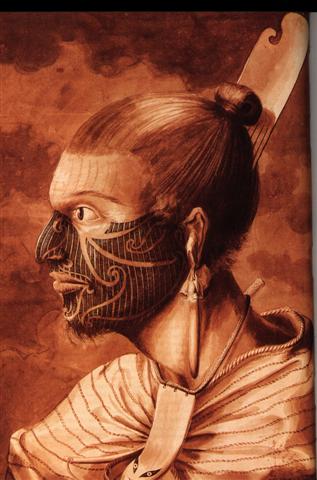 |
|
CLOSE TO THE FULL
MOON: |
|
SEPT 24 (84 + 183) |
25
(*188) |
26 |
|
HAN = ζ Ophiuchi
(251.0) |
ζ
Herculis,
η
Tr. Austr.
(252.1), η Herculis, β Apodis (252.5) |
ATRIA
=
α
Tr. Austr.
(253.9) |
|
Nov 27 |
28 |
29 (333) |
|
°Nov 23 |
24 (*248) |
25 (329) |
|
'Oct 31 |
'Nov 1 (*225) |
2 (306) |
|
"Oct 17 (*210) |
18 |
19 (292) |
 |
|
3 he ngaatu. (*71) |
4 he tuitui koviro. |
5 he ketu anga
mea. |
6 he ketu takarua. |
|
Gaatu, totora reed.
Vanaga. Gaatu 1.
Bulrush, reed. 2. (gatu). Churchill.Gatu.
Gaatu, totora reed. Gatu: 1. To
press, to tighten, to squeeze. 2. To pack tight.
3. To pull suddenly, to give a jerk. I ka
hakarogo atu, ku eke á te kahi, he gatu mai,
as soon as he felt the tuna be, he pulled in
[the line] with a sharp jerk. 4. To kick. 5.
E gatu te hagu, to wait for something
impatiently (gatu, breath). 6. Shortly,
very soon. He tu'u gatu, he is coming
shortly, he is just about to arrive. Vanaga.
Bulrush, reed. Gaatu (gatu) 1. To
feel of, to pinch, to throttle with the hands,
to touch, to press (gaatu); gatuga,
pressure; gatugatu, to trample down. T
Mgv.: natu, to press out linen, to
squeeze a person or a sore place. Mq.: natu,
to pinch. Ta.: natu, to pinch, to bruise.
2. To suppurate. 3. Gatu mai gatu atu,
sodomy. Gatua (gatu 1), tractable,
to press. Churchill. Scirpus riparius
var. paschalis. Barthel 2.
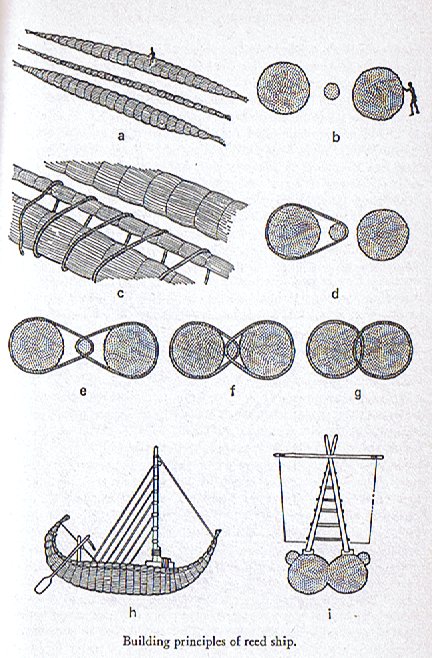
... All this,
which in so many ways parallels the normal
imagery of the Old World culture-hero myths,
telling of the one who is gone, dwells
underground in a happy, timeless land, as lord
of the realm of the happy dead, like Osiris,
but will rise again, we can read
without surprise. But what is
surprising indeed was the manner of
Quetzalcoatl's actual return. The priests
and astrologers did not know in what cycle he
was to reappear; however, the name of the year
within the cycle had been predicted, of old, by
Quetzalcoatl himself. Its sign was 'One
Reed' (Ce Acatl), which, in the Mexican
calendar, is a year that occurs only once in
every cycle of fifty-two. But the year when
Cortes arrived, with his company of fair-faced
companions and his standard, the cross, was
precisely the year 'One Reed'. The myth of the
dead and resurrected god had circumnavigated the
globe ...
Tui. 1. To sew mats, to
make strings. E-tahi tuitui reipá i Te Pei,
ekó rava'a e-varu kaukau; i-garo ai i
Hiva, i te kaiga, a necklace of
mother-of-pearl is on te Pei, few will
find it (lit: eight groups of people); it has
remained in Hiva, in our homeland. 2. The
three stars of Orion's Belt. Vanaga.
Aga. Work; to work, to
make, to build, to create: O te atua i-aga-ai
i te ragi, i te henua. God made heaven and
earth. Vanaga. Agahuru (hagahuru,
hagauru). Agai (hagai).
Agatahi (aga-tahi) one, (hagatahi);
agatahi ahi atu, day before yesterday;
hagatahi ahi, yesterday. Churchill.
Ketu. To bound, to climb
over, to leap, to jump, to raise (keetu).
Mq. ketu, to raise, to lift. Ketuketu,
to spread out, hihi ketuketu, to
turn back the eyelids. Churchill. Pau.:
Ketuketu, to dig. Ta.: etuetu, id.
Mq.: ketu, to dig up with the snout. Ma.:
ketu, id. Churchill. Mq.: ketuketu,
to snuff a candle. Sa.: eueu, id.
Churchill.
Taka, takataka.
Circle; to form circles, to gather, to get
together (of people). Vanaga. 1. A dredge. P
Mgv.: akataka, to fish all day or all
night with the line, to throw the fishing line
here and there. This can only apply to some sort
of net used in fishing. We find in Samoa ta'ā
a small fishing line, Tonga taka the
short line attached to fish hooks, Futuna
taka-taka a fishing party of women in the
reef pools (net), Maori takā the thread
by which the fishhook is fastened to the line,
Hawaii kaa in the same sense, Marquesas
takako a badly spun thread, Mangareva
takara a thread for fastening the bait on
the hook. 2. Ruddy. 3. Wheel, arch; takataka,
ball, spherical, round, circle, oval, to roll in
a circle, wheel, circular piece of wood, around;
miro takataka, bush; haga takataka,
to disjoin; hakatakataka, to round, to
concentrate. P Pau.: fakatakataka, to
whirl around. Mq.: taka, to gird. Ta.:
taa, circular piece which connects the frame
of a house. Churchill.Takai, a curl, to
tie; takaikai, to lace up; takaitakai,
to coil. P Pau.: takai, a ball, to tie.
Mgv.: takai, a circle, ring, hoop, to go
around a thing. Mq.: takai, to voyage
around. Ta.: taai, to make into a ball,
to attach. Churchill. Motu takarua, west
wind. Vanaga. |
|
MARCH 28 |
29 (88 = 39 +
49) |
30 |
31 (*10) |
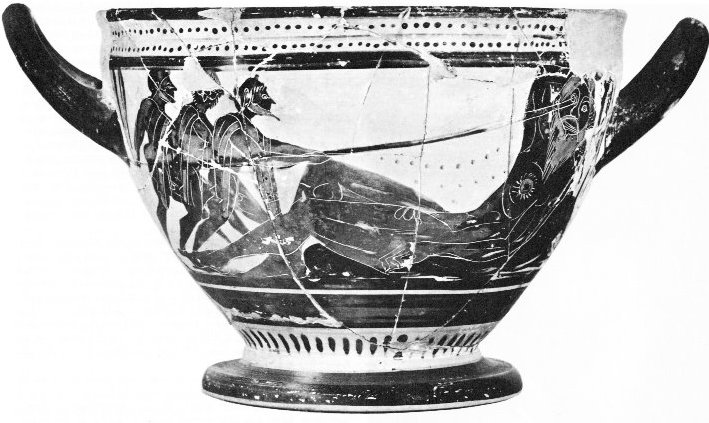
... 'Yes, for he was a monstrous thing and
fashioned marvelously, nor was he like to any
man that lives by bread, but like a wooded peak
of the towering hills, which stands out apart
and alone from others.' Odysseus, choosing
twelve men, the best of the company, left his
ships at shore and sallied to the vast cave. It
was found stocked abundantly with cheeses,
flocks of lambs and kids penned apart, milk
pails, bowls of whey; and when the company had
entered and was sitting to wait, expecting
hospitality, the owner came in, shepherding his
flocks. He bore a grievous weight of dry wood,
which he cast down with a din inside the cave,
so that in fear all fled to hide. Lifting a huge
doorstone, such as two and
twenty good [maitaki] four-wheeled
wains could not have raised from the ground, he
set this against the mouth of the cave, sat
down, milked his ewes and goats, and beneath
each placed her young, after which he kindled a
fire and spied his guests ...
... The
earliest depiction that has been linked to the
constellation of Orion is a prehistoric
(Aurignacian) mammoth ivory carving found in a
cave in the Ach valley in Germany in 1979.
Archaeologists have estimated it to have been
fashioned approximately 32,000 to 38,000 years
ago ... The artist cut, smoothed and carved one
side (A) and finely notched the other
side (B) and the edges. Side A
contains the half-relief of an anthropoidal
figure, either human or a human-feline hybrid,
known as the 'adorant' because its arms are
raised as if in an act of worship.
On side B together with the four edges
is a series of notches that are clearly set in
an intentional pattern. The edges contain a
total of 39 notches in groups of 6, 13, 7 and
13. A further 49 notches on side B are
arranged in four vertical lines of 13, 10, 12
and 13 respectively plus a further notch that
could be in either of the middle two lines ...
The grouping of the notches on the plate
suggests a time-related sequence.
The total number of notches (88) not only
coincides with the number of days in 3 lunations
(88.5) but also approximately with the number of
days when the star Betelgeuse (α Ori)
disappeared from view each year
between its heliacal set (about 14 days before
the spring equinox around 33,000 BP) and its
heliacal rise (approximately 19 days before the
summer solstice). Conversely, the nine-month
period when Orion was visible in the sky
approximately matched the duration of human
pregnancy, and the timing of the heliacal rise
in early summer would have facilitated a ‘rule
of thumb’ whereby, by timing conception close to
the reappearance of the constellation, it could
be ensured that a birth would take place after
the severe winter half-year, but leaving enough
time for sufficient nutrition of the baby before
the beginning of the next winter. There is a
resemblance between the anthropoid on side A and
the constellation Orion. None of these factors
is convincing when taken in isolation, because
of the high probability that apparently
significant structural and numerical
coincidences might have arisen fortuitously.
However, taken together they suggest that the
anthropoid represented an asterism equivalent to
today’s constellation of Orion, and that the
ivory plate as a whole related to a system of
time reckoning linked to the moon and to human
pregnancy. If so, then ethnographic comparisons
would suggest that the Geißenklösterle
culture related their ‘anthropoid’ asterism to
perceived cycles of cosmic power and fertility
...
 |
 |
 |
 |
 |
|
Ga1-7 |
Ga1-8 |
Ga1-9 |
Ga1-10 |
|
TABIT
=
π³
Orionis
(71.7),
π²
Orionis (71.9)
*320 (South Pole star, Dramasa) - *71 (Tabit) =
*249 (Antares) |
π4
Orionis (72.1),
ο¹
Orionis (72.4),
π5
Orionis (72.8)
*31.0 = *72.4 - *41.4 |
π¹
Orionis (73.0),
ο²
Orionis (73.4),
HASSALEH
=
ι
Aurigae
(73.6),
π6
Orionis (73.9)
*32.0 = *73.4 - *41.4 |
ALMAAZ (The Male Goat)
=
ε
Aurigae
(74.7),
HAEDUS I
=
ζ
Aurigae
(74.8) |
 |
|
May 31 |
June 1 (152) |
2 (*73) |
3 |
|
°May 27 |
28 (148) |
29 |
30 |
|
'May 4 |
5 (125) |
6 (*46) |
7 |
|
"April 20 |
21 (111) |
22 (*32) |
23 |
|
CLOSE TO THE
FULL MOON: |
|
SEPT 27 (270 = 3 * 90) |
28 |
29 |
30 (*193) |
|
Tail-6 (Tiger)
WEI (Tail)
= ε Scorpii,
η Arae (254.3),
DENEBAKRAB
= μ Scorpii
(254.7) |
ι Ophiuchi (255.3),
GRAFIAS
(Claws)
= ζ Scorpii
(255.4)
*214.0 = *255.4 - *41.4 |
κ Ophiuchi (256.2), ζ Arae (256.5), ε Arae
(256.8),
CUJAM (Club)
= ε Herculi
(256.9) |
no star listed (257) |
|
Nov 30 |
Dec 1 |
2 (4 * 84 =
336) |
3 |
|
°Nov 26 |
27 |
28 |
29 (333) |
|
'Nov 3 |
4 |
5 |
6 (310) |
|
"Oct 20 |
21 (*214) |
22 (295) |
23 |
 |
The Foot of
Orion (Rigel) ought to be at the origin - at origo like ri'o
-

and with the first pair of taro variants (without the
preceding article he) at the end of page E:67
there was a suggestion that the 'banana season'
continued.
|
origo (he
ri'o) |
5 types of banana shoots (he maika)
from the plantation of
Teke: |
|
Teke.
Occiput. Teketeke, short (not
tall); also: teke. Vanaga. Teke ki
nei, as far as, until (? tehe 1).
Teketeke, crest, ridge. Churchill.
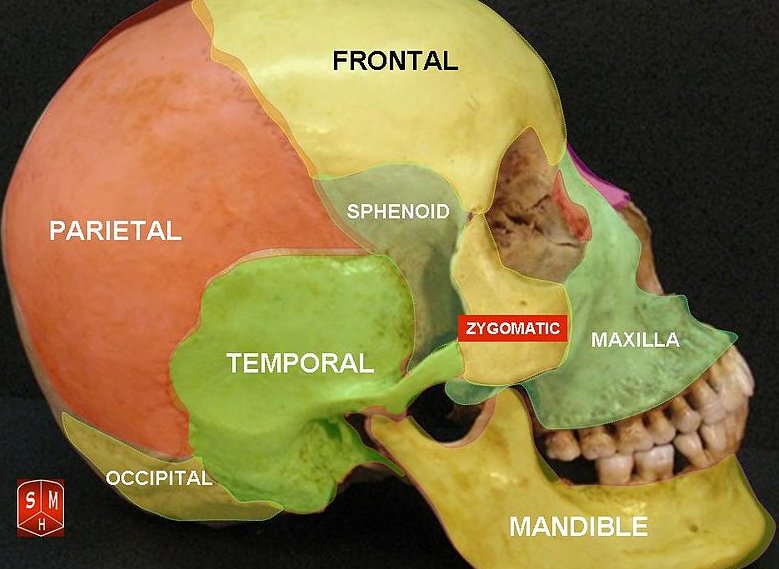 |
|
1 he koro
tea. |
2
he hihi. |
3 he
pukapuka. |
4 he pia. |
|
he maika [E:67] |
|
- |
origo
(*63) |
he ri'o |
|
1 |
*1 (*64) |
he koro tea. |
a Teke. a Oti. |
|
2 |
*2 |
he hihi. |
|
3 |
*3 |
he pukapuka. |
|
4 |
*4 |
he pia. |
|
5 |
*5 |
he nahoo. |
|
Maika.
Banana (Musa
sapientum). Ancient varieties
were called ri'o, hihi, korotea,
pia, pukapuka, naho'o. Vanaga.
Meika, banana. Pau.,
Mgv.: meika, id. Mq.:
meika, meia, id. Ta.:
meia, id.
Churchill. |
Koro. 1. Father
(seems to be an older word than matu'a
tamâroa). 2. Feast, festival; this is
the generic term for feasts featuring songs
and banquetting; koro hakaopo, feast
where men and women danced. 3. When (also:
ana koro); ana koro oho au ki
Anakena, when I go to Anakena; in
case, koro haga e îa, in case
he wants it. Vanaga. If. Korokoro, To
clack the tongue (kurukuru).
Churchill. Ma.: aokoro, pukoro,
a halo around the moon. Vi.: virikoro,
a circle around the moon. There is a
complete accord from Efaté through Viti to
Polynesia in the main use of this stem and
in the particular use which is set to itself
apart. In Efaté koro answers equally
well for fence and for halo. In the marked
advance which characterizes social life in
Viti and among the Maori the need has been
felt of qualifying koro in some
distinctive manner when its reference is
celestial. In Viti virimbai has the
meaning of putting up a fence (mbai
fence); viri does not appear
independently in this use, but it is
undoubtedly homogenetic with Samoan vili,
which has a basic meaning of going around;
virikoro then signifies the
ring-fence-that-goes-around, sc. the moon.
In the Maori, aokoro is the
cloud-fence. Churchill 2.
Hihi ketuketu, to turn back the
eyelids.
Kihipuka, corresponding to sunrise, or
about 6 A.M.
Tiputa.
Pau.: To bore, to perforate. Ta.:
tiputa, to pierce. Mq.: tiputa,
id. Ha.: kipuka, an opening.
Churchill. |
|
MARCH 20
(*364) |
0h |
22 (*1) |
23 |
24 (83) |
 |
no glyph |
 |
 |
 |
|
Gb8-30 (242) |
Ga1-1 |
Ga1-2 |
Ga1-3 |
|
Al Dabarān-2 (The Follower)
HYADUM I
= γ Tauri
(63.4)
*22.0 = *63.4 - *41.4 |
HYADUM II
= δ¹ Tauri
(64.2) |
Net-19 (Crow)
AIN (Eye)
=
ε Tauri,
θ¹
Tauri,
θ²
Tauri (65.7) |
no star listed (66) |
no star listed (67) |
|
... There
was no water in the village. The lakes and
rivers were dry. Raven and Crow, two young
girls who were having their first menstrual
courses, were told to go and draw water from
the ocean. Finding the journey too long,
Raven decided just to urinate into her
basket-bucket. She decieved no one and was
severly scolded. Crow returned much later
but with drinking water. As a punishment,
Raven was condemned never to find water in
the summer; only in winter would she find
something to drink. For that reason the
Raven never drinks during the hot months;
she speaks with a raucous voice because of
her dry throat
... |
|
May 23 |
24 |
25 (145) |
26 (*66) |
27 |
|
°May 19 |
20 |
21 (*61) |
22 (142) |
23 |
|
'April 26 |
27 |
28 (118) |
29 (*39) |
30 |
|
"April 12
(*22) |
13 |
14 (104) |
15 (*25) |
16 (471 =
314 * 1½) |
|
CLOSE TO
THE FULL MOON: |
|
19 |
SEPT 20
(*183) |
21 (264) |
EQUINOX |
23 |
|
YED POSTERIOR (Hand Behind)
=
ε
Ophiuchi,
RUKBALGETHI SHEMALI
(Northern Knee of the Giant) =
τ
Herculis
(246.6).
δ
Apodis (246.7),
ο
Scorpii (246.8) |
Heart-5 (Fox)
σ Scorpii
(247.0),
HEJIAN = γ Herculis
(247.2),
ψ
Ophiuchi (247.7) |
ρ
Ophiuchi (248.1),
KAJAM (Club)
=
ω
Herculis
(248.3),
χ
Ophiuchi (248.5),
SHE LOW (Market Tower) = υ Ophiuchi,
Tr.
Austr. (248.7), ζ Tr. Austr. (248.8) |
Al Kalb-16 (The Heart) /
Jyeshtha-18 (Eldest) /
ANA-MUA-1 (Entrance pillar)
ANTARES
= α Scorpii
(249.1),
MARFIK (Elbow)
= λ Ophiuchi,
φ Ophiuchi (249.5), ω Ophiuchi (249.8) |
γ Apodis (250.1), σ Herculis (250.3), θ Tr.
Austr. (250.6), τ Scorpii (250.7) |
|
...
Proclus informs us that the fox star nibbles
continuously at the thong of the yoke which
holds together heaven and earth; German
folklore adds that when the fox succeeds,
the world will come to its end. This fox
star is no other than Alcor, the
small star g near zeta Ursae Majoris (in
India Arundati, the common wife of
the Seven Rishis, alpha-eta Ursae
...
 |
|
Nov 22 |
23 (327) |
24 |
25 (*249) |
26 |
|
°Nov 18 |
19 |
20 (*244) |
21 (325) |
22 |
|
'Oct 26 |
27 (300) |
28 |
29 (*222) |
30 |
|
"Oct 12 |
13 (286) |
14 |
15 (*208) |
16 |
When the creators of Manuscript E came up with the name
Teke (Occiput) they could have been inspired by
the 6 (ono, as in Tau-ono) unique 'occiput-birds' at the end of side b on the G
tablet. To make their writings understandable they had
to take account of the glyphs on the G tablet (which
text had been published recently).
|
 |
1 |
 |
1 |
 |
 |
1 |
 |
1 |
 |
|
496 |
498 |
500 |
136 |
138 |
140 |
... A sidelight falls upon the notions connected
with the stag by Horapollo's statement concerning
the Egyptian writing of 'A long space of time: A
Stag's horns grow out each year. A picture of them
means a long space of time.' Chairemon (hieroglyph
no. 15, quoted by Tzetzes) made it shorter: 'eniautos:
elaphos'. Louis Keimer, stressing the absence of
stags in Egypt, pointed to the Oryx (Capra
Nubiana) as the appropriate 'ersatz', whose head
was, indeed, used for writing the word rnp =
year, eventually in 'the Lord of the Year', a
well-known title of Ptah. Rare as this modus of
writing the word seems to have been - the
Wörterbuch der Aegyptischen Sprache (eds. Erman
and Grapow), vol. 2, pp. 429-33, does not even
mention this variant - it is worth considering (as
in every subject dealt with by Keimer), the more so
as Chairemon continues his list by offering as
number 16: 'eniautos: phoinix', i.e., a
different span of time, the much-discussed
'Phoenix-period' (ca. 500 years) ...
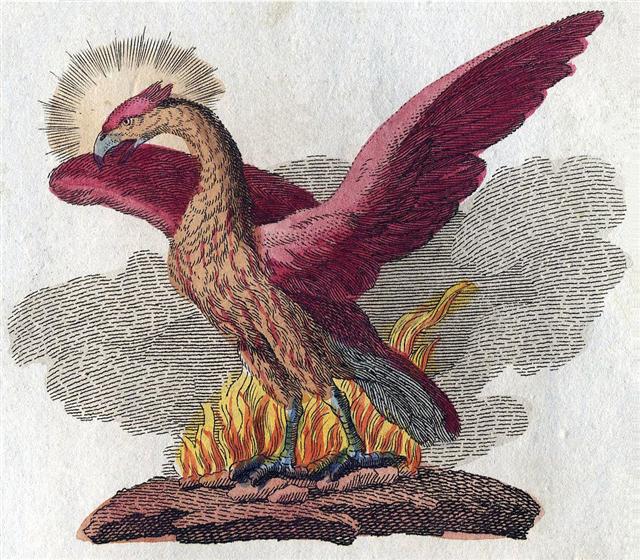
|


































